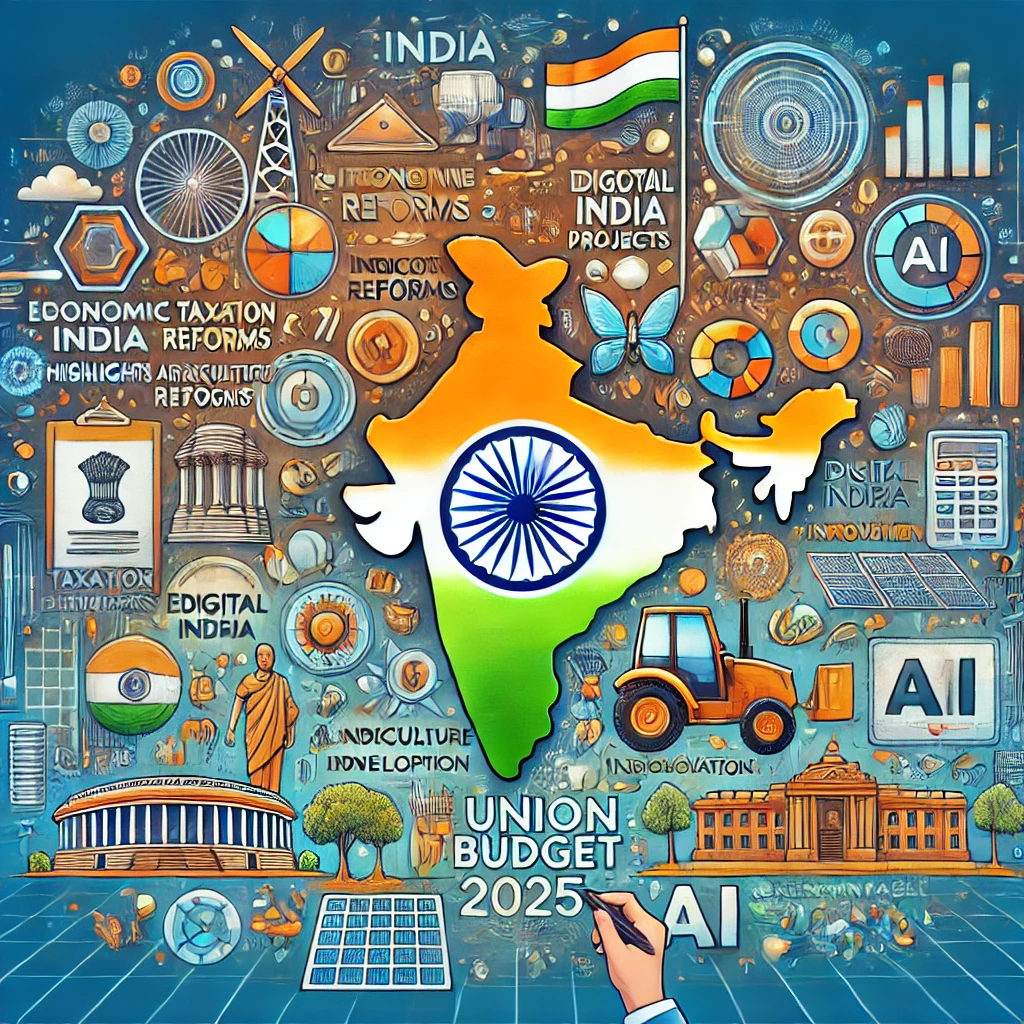Finance Minister Nirmala Sitharaman presented the Union Budget 2025-26 today, outlining a strategic roadmap for economic growth, social progress, and technological advancement. With a focus on agriculture, infrastructure, education, and innovation, the budget aims to drive inclusive and sustainable development. Here’s a closer look at the major announcements and their potential impact:
Taxation: Relief for Middle-Class Earners
- Income Tax Exemption Up to ₹12 Lakh: Individuals earning up to ₹12 lakh annually under the new tax regime will be exempt from income tax, increasing disposable income and consumer spending.
- Simplified Tax Structure: Adjustments in tax slabs aim to make compliance easier for taxpayers.
Agriculture and Rural Development
- Makhana Board in Bihar: A dedicated board will enhance production, processing, and marketing of Makhana (fox nuts), benefiting farmers in north Bihar.
- Western Kosi Canal Project: This initiative will provide irrigation to over 50,000 hectares of farmland in Bihar’s Mithilanchal region, boosting agricultural productivity.
- National Institute of Food Technology: A new institute in Bihar will promote food processing, generate employment, and support value addition in agriculture.
Infrastructure and Connectivity
- New Greenfield Airports: Airports will be developed in Bihar, including a brownfield expansion in Bihta and an upgrade to Patna airport.
- Enhanced Road and Rail Networks: Increased budget allocation for transport infrastructure aims to improve connectivity across urban and rural areas.
- Smart Cities Development: Additional funding will strengthen urban infrastructure, making cities more sustainable and technologically equipped.
Education and Skilling
- Expansion of IITs: Five IITs, including IIT Patna, will see an increase in student capacity by 6,500 seats.
- National Skilling Centres: Five centres focusing on AI, robotics, and data analytics will prepare a future-ready workforce.
- AI Research Hubs: Three centres of excellence will drive advancements in AI for healthcare, agriculture, and energy.
Healthcare and Wellness
- ‘Heal in India’ Initiative: This programme aims to boost medical tourism by easing visa norms and offering world-class healthcare services.
- 200 Cancer Care Centres: Daycare cancer treatment facilities will be established in district hospitals nationwide, improving access to affordable care.
Innovation and Technology
- Support for Startups: Tax benefits and funding support for startups in AI, blockchain, and renewable energy will drive technological growth.
- Expansion of Digital India: Investments in broadband connectivity and e-governance will enhance digital infrastructure, especially in rural areas.
Social Welfare and Inclusivity
- Healthcare for Gig Workers: Gig economy workers will now be covered under the PM Jan Aarogya Yojana (PM-JAY), ensuring affordable medical treatment.
- Affordable Housing Boost: Increased allocation under the Pradhan Mantri Awas Yojana will support the goal of ‘Housing for All’ by 2030.
Environmental Sustainability
- Renewable energy push: Funding for solar and wind projects will contribute to achieving 500 GW of renewable energy capacity by 2030.
- EV incentives: Tax benefits and subsidies will encourage electric vehicle adoption, reducing carbon emissions.
What This Budget Means for India
The 2025-26 budget balances economic expansion with social welfare. Key takeaways include:
- Financial Relief for the Middle Class: Tax reforms will enhance savings and consumption.
- Strengthening Agriculture: Initiatives like the Makhana Board and Kosi Canal project will uplift rural communities.
- Investment in Future Technologies: AI research, skilling, and startup support will position India as a leader in innovation.
- Inclusive Development: Healthcare, housing, and gig worker benefits ensure that growth reaches all segments of society.
The Union Budget 2025-26 sets the stage for a more resilient and progressive India, aligning with the vision of ‘Viksit Bharat’ by 2047. As these initiatives roll out, they are expected to reshape the nation’s economic landscape and improve millions of lives.


